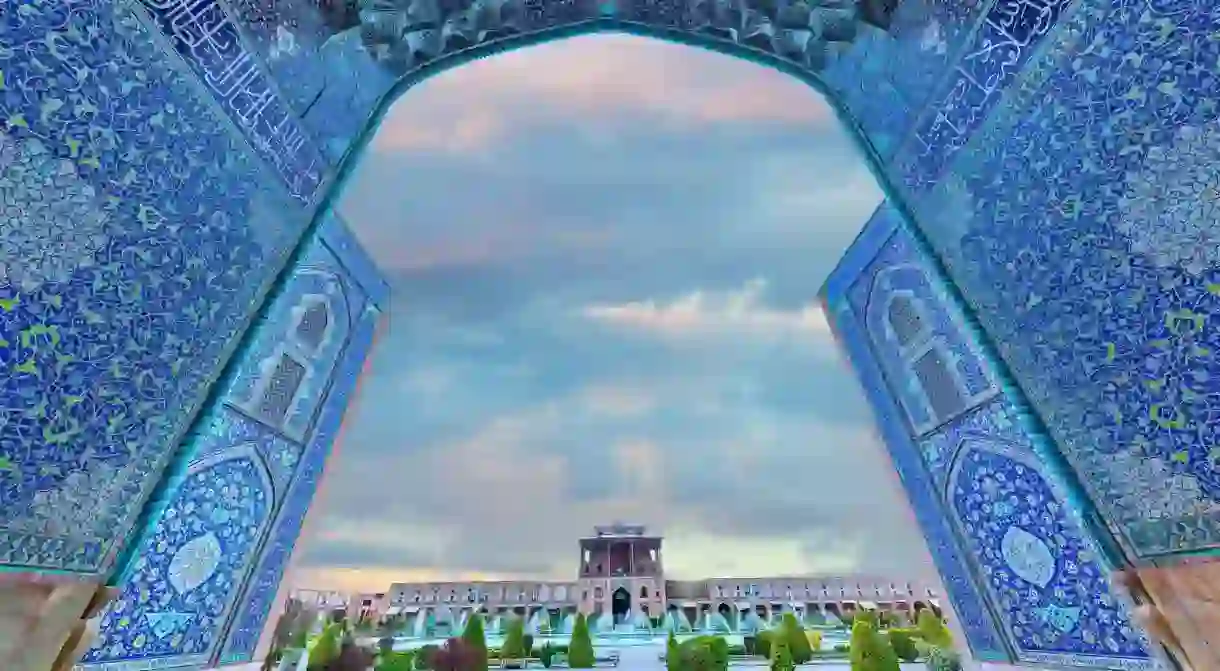The Top Art Museums You Should Visit In Tehran

After the looting and museum closures of the 1979 revolution, Iran’s museums and galleries set about rebuilding their tributes to one of the world’s oldest civilizations. Now, in addition to numerous contemporary art galleries dotted around the country, they offer a rich insight into thousands of years of art and culture. Here are the best, must-visit museums in Tehran, from Iran’s National Museum to the Iran Cinema Museum.
Reza Abassi Museum
Museum

Named after a 16th century Persian miniaturist, the Reza Abassi Museum is dedicated to preserving Iran’s artistic traditions. The museum’s main collection includes manuscripts, jewelry, clay, metalwork, and lacquer paintings, and runs training courses to keep arts like calligraphy and traditional Persian drawing alive. The museum also runs temporary exhibitions, which have recently included an exhibit on Sadegh Hedayat, a 20th century Iranian writer whose controversial works were – and in many cases, are still – banned across the Islamic world.
Iran Cinema Museum
Cinema, Museum

The Iran Cinema Museum offers a 100-year history of Iranian cinema. On show are posters, equipment and on-set photos among other memorabilia relating to this prolific yet widely under-appreciated artistic genre. In 2013, Bahram Beizaii, a poet and Iranian New Wave filmmaker, donated two unpublished notebooks to the museum. A must-see for cinephiles keen to leave the beaten track, the museum also houses the still-operational first Iranian cinema, which shows Iranian films several times a day and sells classic Iranian films on DVD.
Glassware and Ceramic Museum
Building, Museum

Visitors to the Glassware and Ceramic Museum are taken chronologically through the glassware and ceramics of Iran, starting with clay pots from 4,000 BCE and ending with elaborate modern glassware. The octagonal building housed the Egyptian embassy until its conversion to the museum in the mid-1970s, and it maintains luxurious features from its former life – gilt wall decorations, chandeliers, a mahogany Russian staircase and extensive gardens.
National Jewels Museum
Museum

The Imperial crown jewels of Iran are the largest set of jewels on public display in the world. They have been on show at the Central Bank of Iran since they were transferred by the first Pahlavi Shah to public ownership, but are so valuable that government representatives must be present for the duration of the museum’s opening times and they have been used as collateral to support the country’s monetary system. Some smaller jewels were stolen in the 1979 revolution, but most remain intact in the Bank today. Highlights include the collection’s jewel-encrusted dinner plates and an awe-inspiring globe with its continents picked out in emeralds.
Tehran Museum of Contemporary Art (TMOCA)
Building, Museum, Park

Housed in a suitably modernist building, TMOCA is a hot spot for new Iranian talent. It opens to accommodate visiting art students or for openings for local Iranian artists, so it is best to call in advance. The museum also holds a core collection of modernist Western works (highlights include Picasso, Van Gogh, Dalí, Monet and Warhol) in underground vaults, but these are not easy to access, and most visitors don’t get the chance to see them. These Western works, purchased by Queen Farah in the 1970s, are worth an estimated £2.5 billion in total, making the collection one of the most valuable collections of Western art outside the USA and UK. Situated in the lush Laleh Park, TMOCA is a somewhat secretive museum housed in a modernist, concrete building.
National Museum of Iran
Building, Museum, Park

Iran’s ‘mother museum’ scrupulously records the country’s millennia-long history through its 300,000 artefacts, with the oldest tools in the catalogue dating back over 30,000-35,000 years. The National Museum of Iran is a grand affair, and the two museum buildings are dedicated respectively to the country’s pre-Islamic and post-Islamic history, with a space dedicated wholly to historic copies of the Qur’an. Numismatics enthusiasts should visit the museum’s comprehensive collection of Iran’s coins and seals, made from ivory, gold, silver and marble. Located between the beautiful Ministry of Foreign Affairs building and the leafy Shahr Park with its impressive fountains, the National Museum is a solid part of Tehran’s tourist trail.
Shiraz Pars Museum
Museum

The Pars museum was the first to be established outside Tehran, Iran’s capital. Its main pavilion, previously a reception hall for the royal family, was converted into a gallery and exhibition hall in 1936.Paintings by Aqa Sadeq, an Iranian 20th century artist, line the walls. Outside, the Nazar garden is home to the grave of Karin Khan, ruler of Iran from 1705-1779. The pavilion’s outer walls, intricately inlaid with mosaid, are also worth a closer look.
Carpet Museum
Museum

Iranians have been weaving carpets for 2,500 years, and the Carpet Museum offers visitors over a hundred of the best examples from the 18th century onwards and several from as early as the year 500 BC. The museum itself is just a five-minute stroll from TMOCA through the gorgeous Laleh Park, and was designed in the 1970s by the last Queen of Iran, Farah Diba Pahlavi, to look like a carpet loom. The upper floor is dedicated to temporary exhibitions, and has recently shown a collection of illustrated carpets and another of carpets featuring the Tree of Life. Practicing carpet weavers occasionally demonstrate techniques at the museum – it’s best to call in advance for more information on demonstration dates and times.













